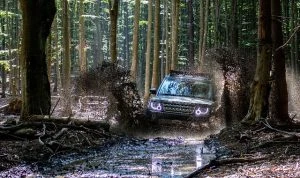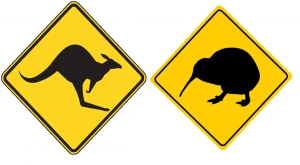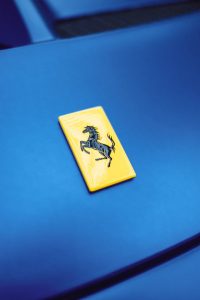4WD and AWD

Getting the best grip on the road or terrain is what will get you moving forwards from A to B in the shortest time. Ever since the invention of the first cars, two-wheel-drive has been the mainstay for delivering the engine’s power out to the wheels. At first, two-wheel drive was usually via the rear wheels, as it was much simpler to run a drive shaft from the engine at the front of the car back to the rear wheels to get grip from the rear wheels and to let the front wheels have the job of steering the vehicle.
In saying that, there is also history of 4WD being experimented with back as early as the late 1800s in combination with a traction engine, and, of course, in World War II, the 4WD Willys Jeep was a game-changer.
New South Wales and New Zealand: Spot The Difference

Thinking of heading across the ditch to New Zealand this winter for a spot of skiing or sightseeing, picking up a rental car so you can travel according to your own fancies? If you’re heading over from New South Wales, you’ll find that although a lot of things are the same when driving in New Zealand compared with back home, there are quite a few sneaky little differences that might trip you up. Most of the road rules and road signs will be familiar, but some aren’t and some are nonexistent. Here’s a handful of some differences you might notice:
Even in the middle of what passes for a city, there’s way less congestion. In the busiest parts of town during rush hour, you’ll get some congestion, but nothing like you’ll find in the middle of Sydney.
How Does Cruise Control Work?
Cruise control is a popular feature in just about all of today’s cars allowing you to maintain a constant speed without having to manually control the accelerator. While first rolled out in the late 1950s, the tech has evolved significantly over recent decades.
Ferrari 2024 Le Mans: Two in a Row

That’s back-to-back for Ferrari at Lemans, having won last year and backing it up again just over the past weekend for 2024. If you look back over the list of winners at Le Mans, there have been numerous times that car marques have won twice in a row, even four or five times in a row, sometimes with the same driver. Only 14 seconds behind the Ferrari, Toyota was nipping at its heels the whole day, er… and night. It’s great to have a red car with the prancing horse back on top, Toyota having won 5 consecutive years running from 2018–2022.
So what makes the Ferrari 499P or Toyota GR010 Hybrid race car so fast? Great aerodynamics, strong reliability, excellent brakes, and epic performance. The Ferrari 499P uses a mid-to-rear internal combustion engine (ICE), as well as a front-mounted electric motor. These two powerplants combine to develop a maximum output of 500 kW to comply with the Le Mans race regulations of 29 Oct 2022. The front-mounted electric motor, rated at 200 kW, draws its necessary electric power from a Formula 1-derived 900 V battery that recharges during deceleration and braking. It provides power at speeds over 190 km/h. The hybrid power is linked and fed though to a seven-speed sequential transmission. The car was clocked just shy of 350 km/h, and the 0–100 km/h time takes about as much time as it does to complete this sentence!